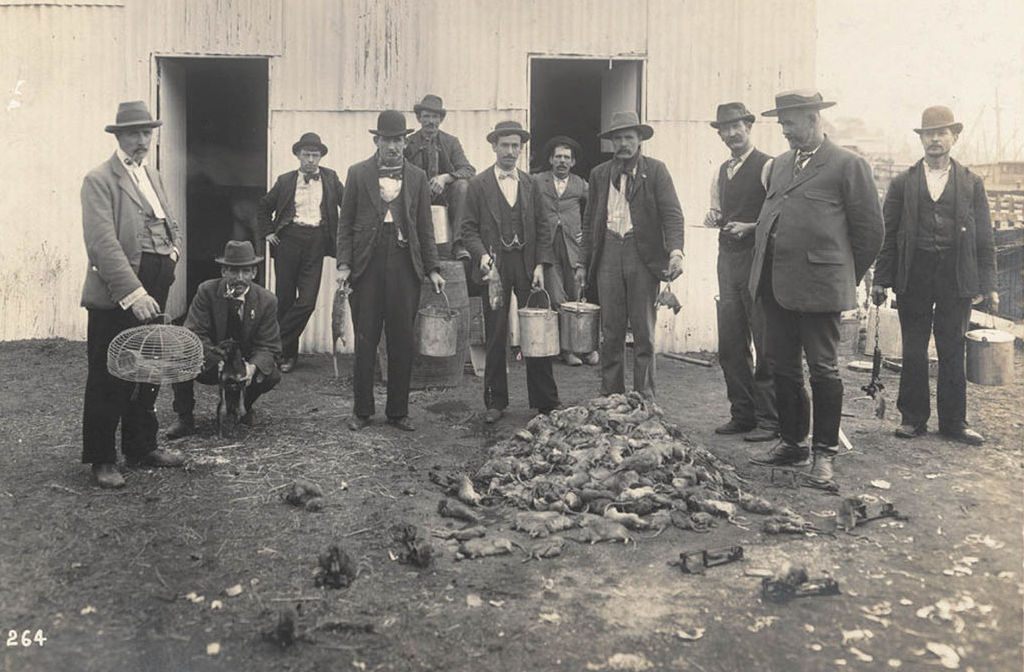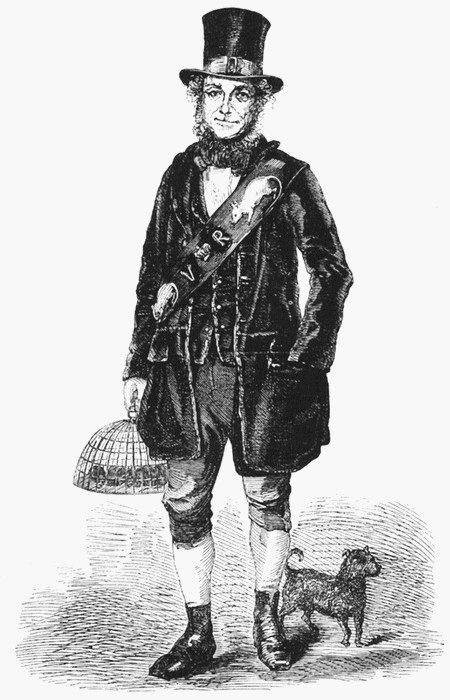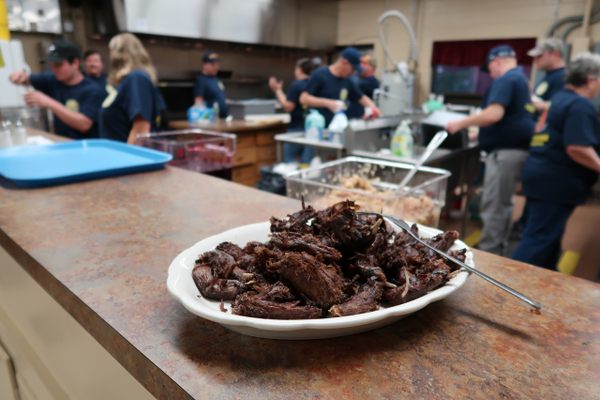Meet the Self-Appointed King of Victorian Rat-Catchers

Ratcatchers in Sydney in 1900. (Photo: State Library of NSW)
It’s been a big month for New York City rats. On September 21, Pizza Rat lugged a cheesy slice down a flight of subway stairs, carrying the hopes, fears, and dreams of an entire nation along with it. On October 13, footage surfaced of a rat attacking and killing a pigeon during a brutal street battle (presumably for the title of Biggest Urban Scourge).
If these examples are anything to go by, the city’s rats seem to be getting bolder. How to fight back? Perhaps New York ought to be looking a little further afield for ideas. Across the Atlantic Ocean, even. And back in time. For there lies Victorian London, home of Jack Black: the Queen’s fearless royal rat-catcher.
Unlike the chemically aided rodent exterminators of today, Black used his bare hands to capture the wriggly, squeaking creatures from sewers, sidewalks, and homes. A hobbyist rat-chaser since his boyhood days, he was adept at sweeping up armfuls of them and shoving them into the signature dome-shaped cage he carried around like a suitcase. He was also a consummate showman—in the 1840s, Henry Mayhew, a London journalist who wrote about the lives of the working classes, recalled the first time he ever clapped eyes on Black, who was demonstrating his rat-gathering talents to a crowd gathered on a city street:
[H]e had a kind of stage rigged up, on which were cages filled with rats, and pills, and poison packages … Here I saw him dip his hand into this cage of rats and take out as many as he could hold, a feat which generally caused an “oh!” of wonder to escape from the crowd … he let them run up his arms like squirrels, and the people gathered round beheld them sitting on his shoulders cleaning their faces with their front-paws, or rising up on their hind legs like little kangaroos, and sniffing about his ears and cheeks.
Black’s flair for the dramatic was rivaled only by his sartorial predilections. His self-styled rat-catching costume consisted of a top hat, red waistcoat, green overcoat, and white leather breeches full of holes nibbled by the more capture-resistant rodents. Across his torso he wore a leather sash emblazoned with a crown and the initials “V.R.” (for Victoria Regina, or Queen Victoria), flanked by inset, cast-iron rats on either side. The legitimacy conferred by this official-looking sash—which Black said was given to him by the Queen herself—was further cemented by the handbills Black distributed, which promoted him as “Rat and mole destroyer to Her Majesty.”

Rat-catcher at your service, ma’am. (Illustration from London Labour and the London Poor, 1851)
But, of course, rat-catching wasn’t all about the glamour and fashion. During an interview with Mayhew, Black ran through the many challenges he had encountered in his vocation. “I once had the teeth of a rat break in my finger,” he told Mayhew, “which was dreadful bad, and swole, and putrefied, so that I had to have the broken bits pulled out with tweezers.”
On another job, he recalled, he “took out 300 rats from one hole in the wall,” then “had to carry them in my mouth and hands, and under my arms, and in my buzzum [bosom] and pockets, to take them to the cage.”
With fearless feats like these, it’s no wonder Black secured the position of Queen Victoria’s authorized royal rat-catcher. Or did he?
“Let me tell you, Jack Black was never the Queen’s official rat-catcher,” professor and Victorian rodent enthusiast Gerard O’Sullivan told the Philadelphia Enquirer this year. While O’Sullivan concedes that Black likely “had a government contract to catch rats,” he says he did not possess a royal warrant, “unlike some others.” And while Black went around telling potential customers that Queen Victoria herself bestowed the leather rat-catcher sash on him personally, O’Sullivan says Black’s wife made it in her kitchen.
Regardless of the technicalities, Black was certainly a skilled rat hunter, and his royal status, while likely embellished, was deserved. Some New Yorkers even recognized the rat-catcher’s fake-it-‘til-you-make-it success at the time. In 1841, the New York Mirror published this little bit of back-handed praise:
“Some time ago a rat-catcher, who strolled for several years about the streets of London without finding employment, thought proper to take the title of her majesty’s rat-catcher—and this succeeded beyond his expectations. When it was known that he caught rats at court, all were ready to give him countenance and employment.”







Follow us on Twitter to get the latest on the world's hidden wonders.
Like us on Facebook to get the latest on the world's hidden wonders.
Follow us on Twitter Like us on Facebook